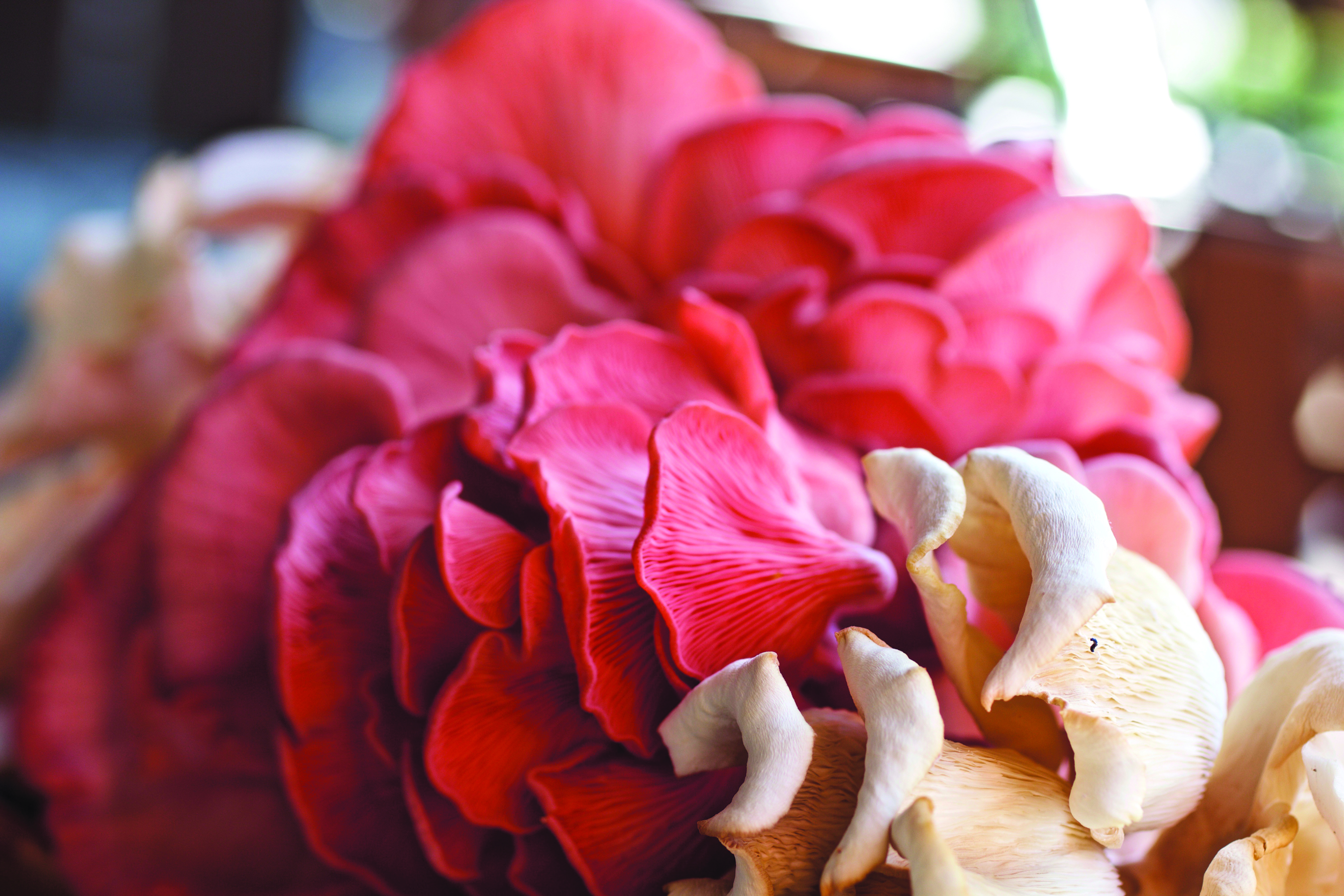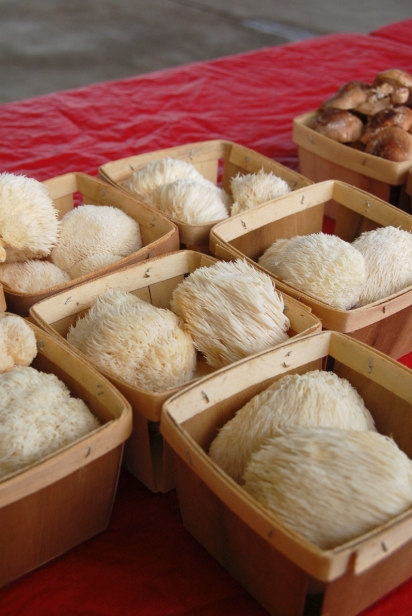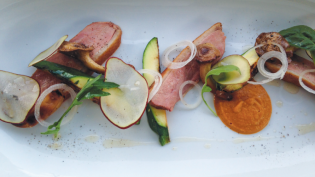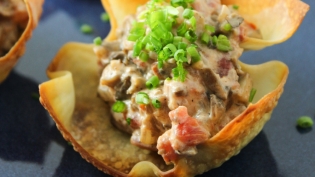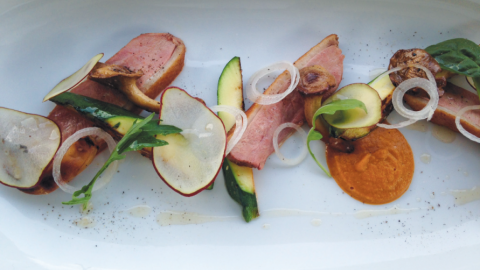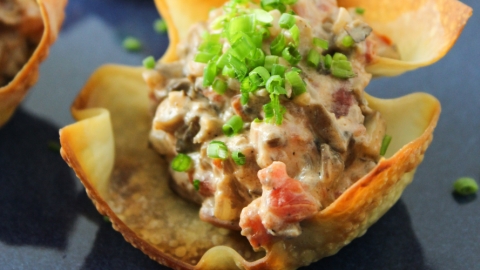Magnificent Mushrooms
They are reclusive, elusive and mysterious. They are beautiful and ugly. They can be delectable or they can be deadly.
The mushrooms of Central Indiana are anything but ordinary, and they’re a treasure trove if you’ve got the time, patience and passion to hunt or grow them.
No one is ambivalent about mushrooms. Say the word to a group of people and half of them will lick their lips while the other half wrinkles their noses. But perhaps the nose-wrinklers are thinking of the lowly and relatively flavor-free button mushroom or, worse, the squishy “stems and pieces” drowning in liquid in a Green Giant can. Calling those “mushrooms” is like calling a crab stick fresh seafood. It’s just a whole ’nother talk show.
More than Morels
The rock stars of the wild mushroom world are Morels, and even non-mushroom-lovers can get excited about them. They herald spring like tulips and Easter bunnies. Generally served swimming in garlic and butter, adorning the top of a steak or simply on their own, morels have a unique, nutty flavor a person could really get hooked on if they weren’t so darned expensive and hard to find.
But once morel season is over, is there really anything for fungus-loving folks to look forward to? The answer is yes, and the bounty coming from Central Indiana grows larger and more diverse all the time. Varieties such as Hen of the Woods (also known as Maitakes), Chanterelles, pink and blue Oysters and the latest darling of the mushroom scene, Lion’s Mane, are becoming regulars at local farmers’ markets and as chef’s nightly specials.
“They taste even better than they look,” said Chef Braedon Kellner of Tinker Street, talking about his new addiction, Lion’s Mane. I treat them like shellfish. Last year I got my hands on a one-pound of wild Lion’s Mane. It literally tasted like king crab to me. I sautéed it in butter, put it in the center of the plate and paired it with a poached egg, garlic confit and gremolata. It sold out in an hour.”
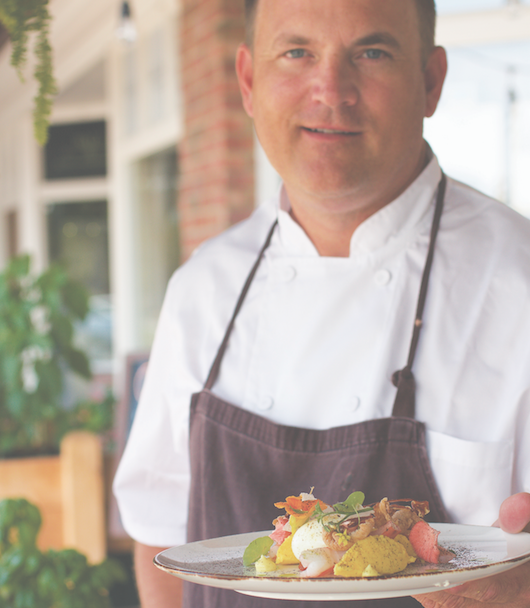 Steve Oakley, executive chef and owner of Oakley’s Bistro, prefers Oyster mushrooms. “I get them whenever I can,” he said. “I love the versatility and the meaty flavor and texture. You can grill them, marinate them, pickle them—they’ll stand up to just about anything.” One of his favorite creations featuring Oyster mushrooms was a riff on shrimp and grits, with a poached egg and Tasso ham, with the Oyster mushrooms standing in for the shrimp.
Steve Oakley, executive chef and owner of Oakley’s Bistro, prefers Oyster mushrooms. “I get them whenever I can,” he said. “I love the versatility and the meaty flavor and texture. You can grill them, marinate them, pickle them—they’ll stand up to just about anything.” One of his favorite creations featuring Oyster mushrooms was a riff on shrimp and grits, with a poached egg and Tasso ham, with the Oyster mushrooms standing in for the shrimp.
Good and Good For You
It’s not just the flavor of these mushrooms that should be drawing you in. Mycologists (those who study mushrooms) also tout the health benefits of them. Lion’s Mane contains a compound used in Eastern medicine for nerve regeneration and to treat Alzheimer’s disease and dementia. Turkey Tail mushrooms are believed to have T-cell stimulating properties that help ward off viral infections and fight cancer. However, this doesn’t mean that you should just plunge headlong into the woods in search of dinner and a cure for what ails you. Many varieties look similar; some are edible and some are poisonous. So there’s that.
“People text me pictures all the time, asking, ‘Can I eat this?’” said Eric Murphy, owner of Shamrock Farm, which is located about 20 miles outside of Indianapolis. “My answer is always, ‘Better not.’ If you’re not a certified mycologist and you have any question at all about what you’re picking, leave it alone.”
Certified mycologist Stephen Russell seconds that.
“There are somewhere around 3,000 species of mushrooms,” he said. “Only a small percentage of mushrooms are edible and only a small percentage are poisonous. The rest are just unpalatable.” Russell has authored a book called The Essential Guide to Cultivating Mushrooms. He also founded the Hoosier Mushroom Society in 2009, which leads organized mushroom hunting forays throughout the year. They also offer certification classes in which amateur foragers can become licensed to sell what they’ve found.
Foraging versus Cultivating
One way to be sure the fungi you’re about to eat is, in fact, edible is to buy them from a cultivator.At Shamrock Farm (in Arlington), Murphy cultivates about 300 pounds per week of Shiitake, Blue Oyster and Lion’s Mane and sells them to chefs across the city and at the 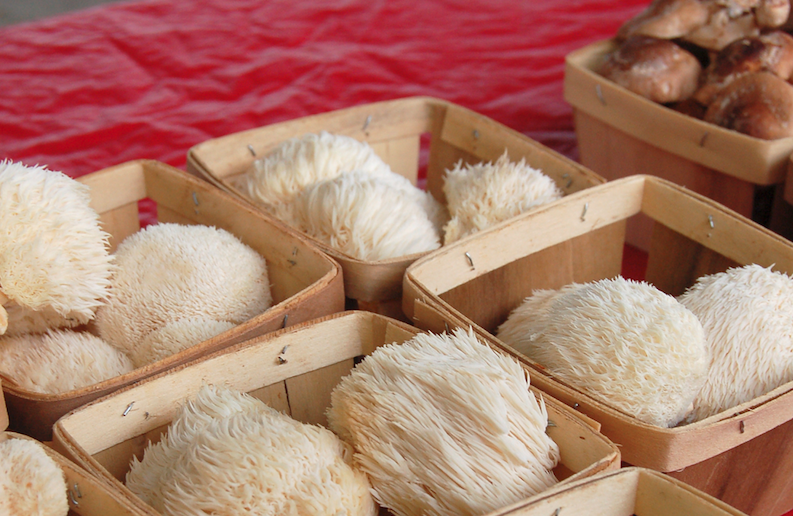 farmers’ market. With remarkably short growing times—Oysters and Shiitakes mature in four to five days—he’s able to keep a fairly constant supply. And he plans to add a new building to exclusively cultivate Portabella mushrooms, because, due to their longer growing time, they “don’t play well with others.”
farmers’ market. With remarkably short growing times—Oysters and Shiitakes mature in four to five days—he’s able to keep a fairly constant supply. And he plans to add a new building to exclusively cultivate Portabella mushrooms, because, due to their longer growing time, they “don’t play well with others.”
Bloomington-based Micro Farms America produces around 2,500 pounds per year of Oyster mushrooms alone.
“This is an incredibly complex process,” said owner C. Virgil Carrington. “Mold or bacteria can wipe out an entire crop and we grow everything here with no pesticide, herbicide or fungicide. We even grow our own media for cultivation—grasses, buckwheat and corn. It’s very labor intensive.”
Carrington sells at the Bean Blossom Farmers’ Market in Bloomington and wholesales both fresh and dehydrated product to Lucky’s Market and Bloomingfoods (both also located in Bloomington). Due to the popularity of mushrooms in hearty cool-weather dishes and holiday menus, fall is the busiest time for them—so much so that growers struggle to keep up with the demand and take the winter months off to regroup, upgrade and prepare for spring.
But for those with the time, training and patience to venture out, foraging has its rewards.
“I’ve got two gals in the woods in Brown County right now,” said Joshua Horrigan, owner of Annabelle’s Garden. “We find amazing mushrooms around Eagle Creek, too. Chicken of the Woods, Puff Balls, Wood Ear, Lion’s Mane, Maitake and Indigo Milk Caps are all pretty prolific in Indiana. My daughter Annabelle and I once found 300 pounds of Chicken of the Woods in one day.”
And, as with most things, technology is beginning to play a role in foraging.
“I’m actually tinkering with foraging with my drone,” said Horrigan. “I’ve programmed in the color of yellow Chanterelles. It found everything I hid in my backyard, so I’m going to try taking it out into the woods.”
So whether you choose to enjoy the bounty of carefully cultivated mushrooms from one of our local growers or the wild taste of hard-won foraged fungi from Indiana’s woodlands, the earthy delights of fall mushrooms abound, and deserve a spot on the center of your plate.
Want to learn how to safely hunt your own mushrooms? Check out HoosierMushrooms.org for a schedule of mushroom-hunting adventures with certified mycologist Stephen Russell.


